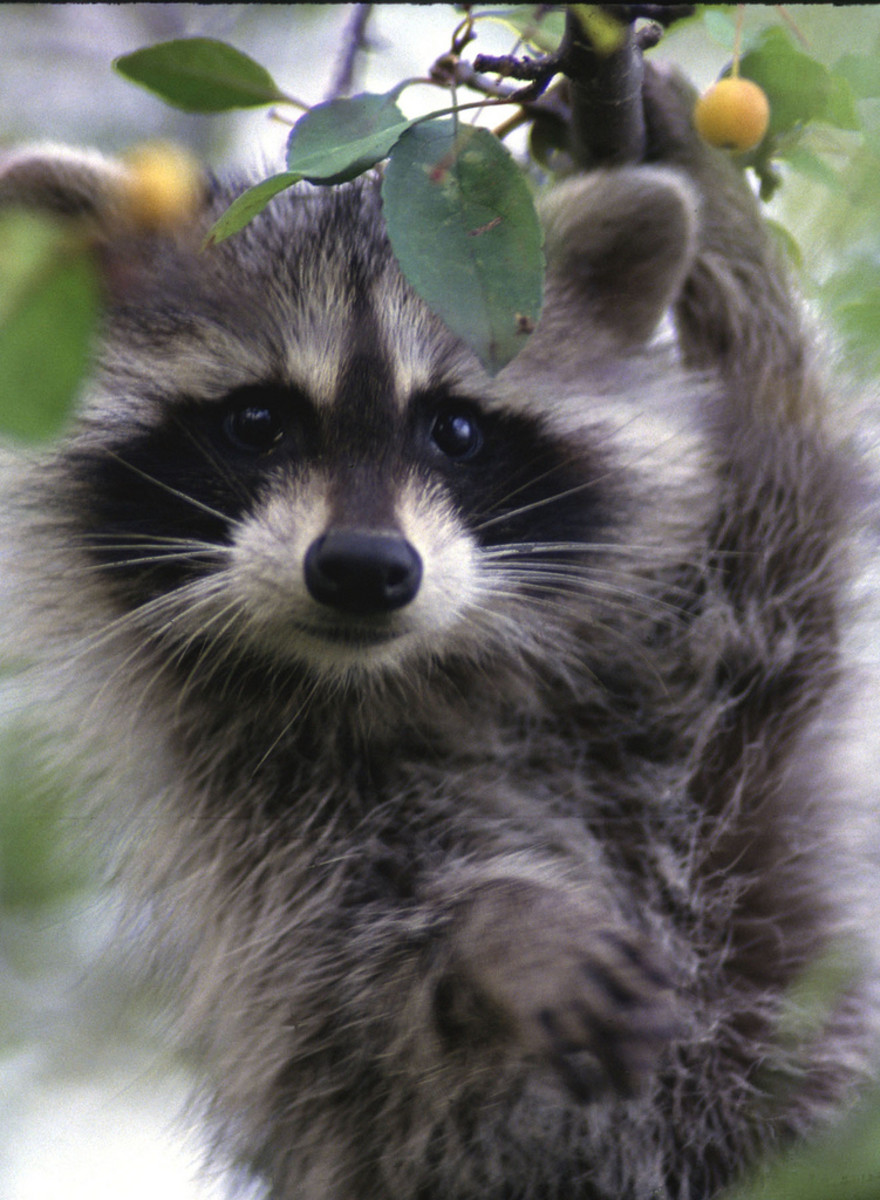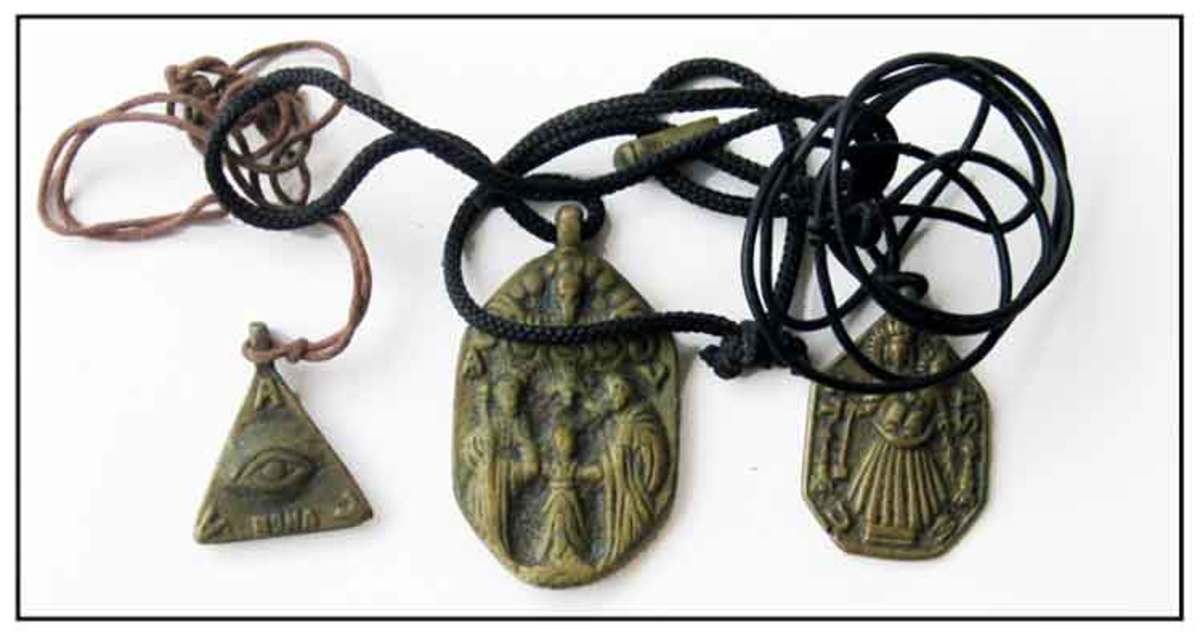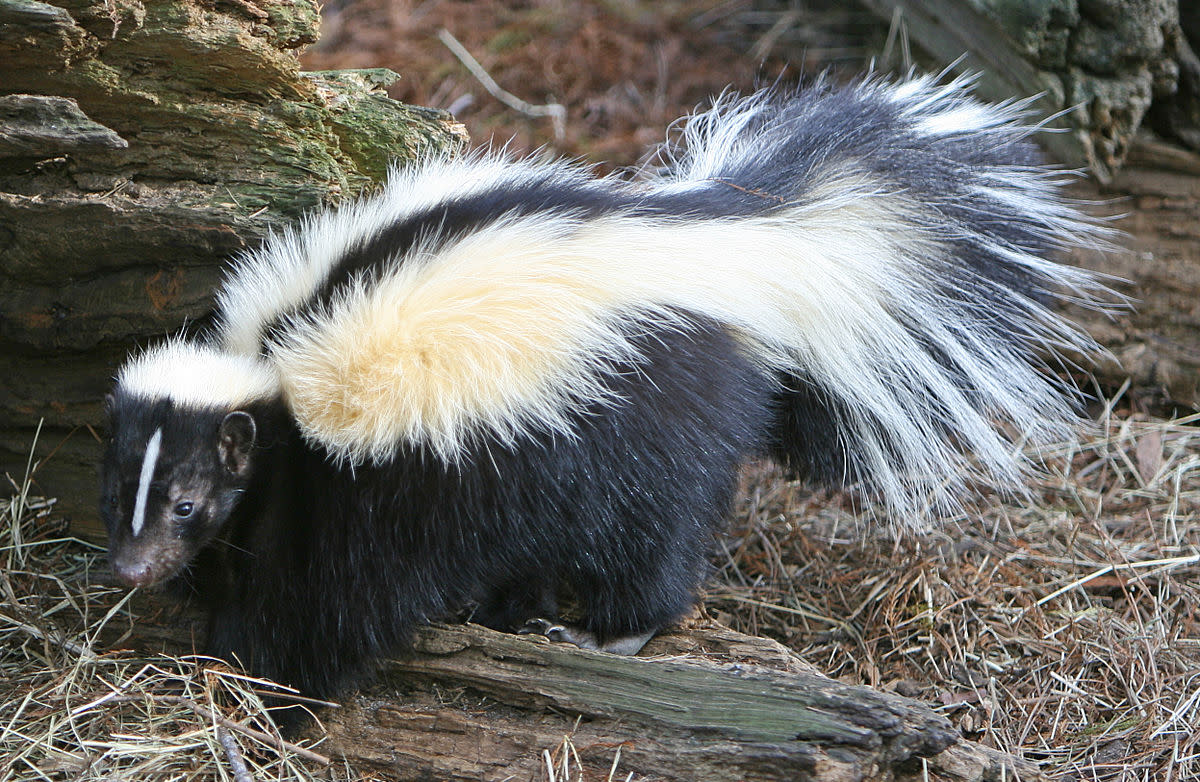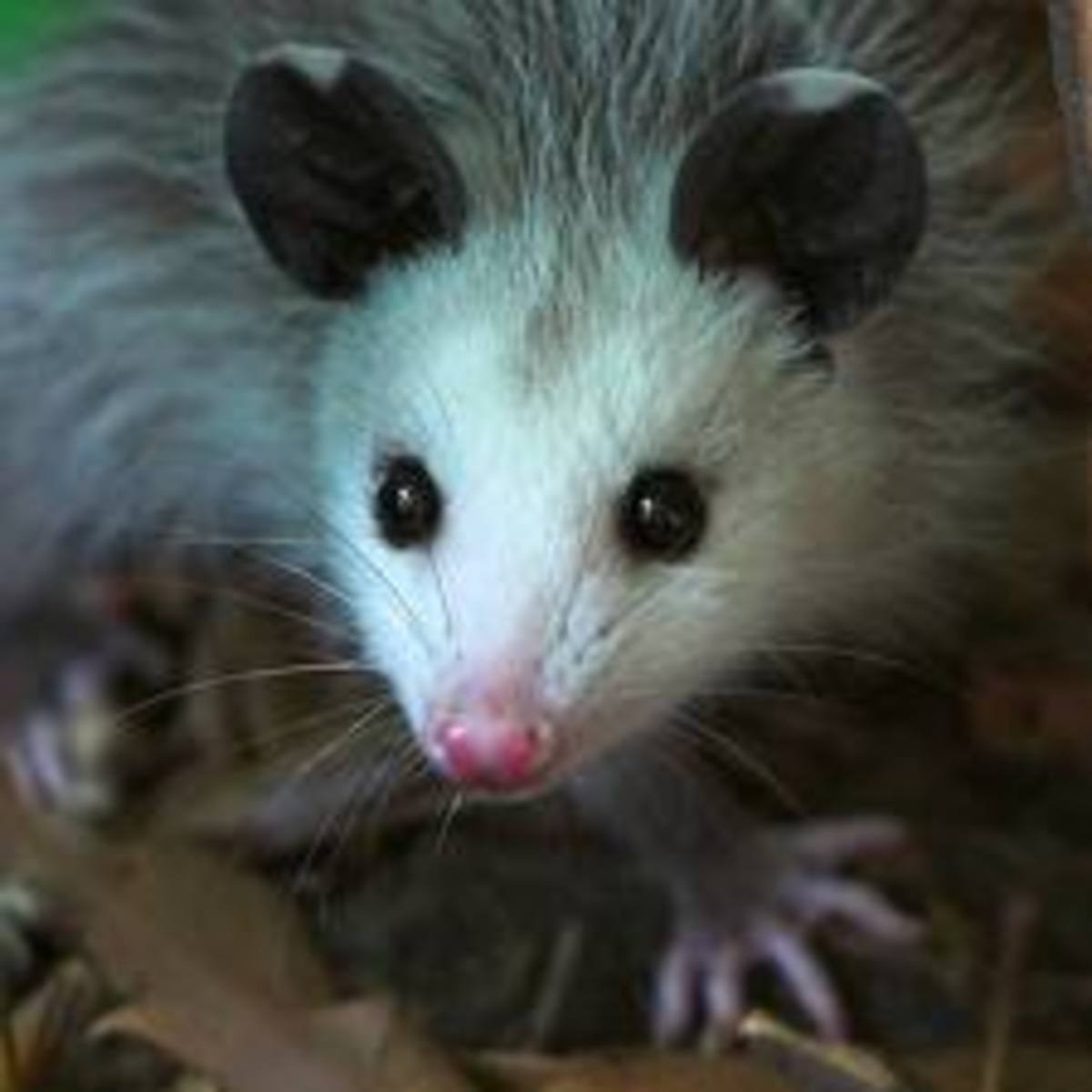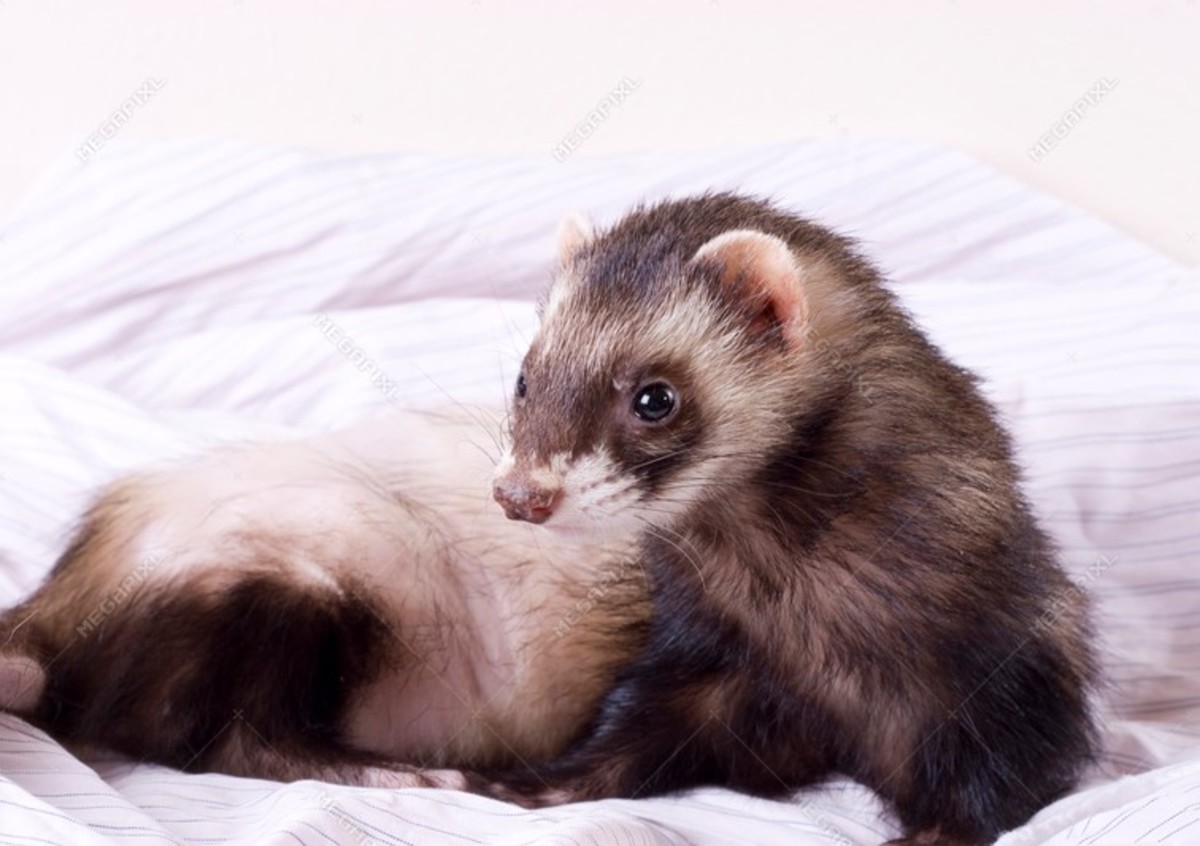Raccoons: The Mask-Wearer of the Night

Raccoons
The night yields many sounds. From the barred owl's hoots to the little peeper's shrill call to the snipe's winnowing in the dark sky to the June bugs crashing against the screen door, we listen. Most of these voices are distinguishable to the animal that makes them.
There is, however, one nocturnal animal that has a wide variety of vocalizations: the raccoon. It can purr, grunt, growl, snarl, scream, twitter, whimper and squeal.
We are all familiar with the grayish fur, black mask and bushy, ringed tail of the raccoon, but sometimes it is difficult to identify some of those strange, unexplainable noises we hear in our yard or woodlot.
Although most adult raccoons are solitary, when they are in pairs or a family group, they are aggressive and noisily squabble over food.
The young, born in April in a tree cavity den, start traveling with their mother when they are two months old. These teenagers often get left behind or caught up in a tree. They will scream and whine all night until she returns to rescue them. The crying has been described as sounding like a human baby's cry.
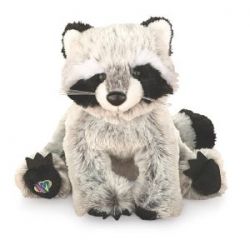
Nest in Trees
Raccoons belong to a family called “Procyonidae” which includes kinkajous, coatis, ringtails and pandas. “Procyonidae” have medium to long bushy tails, usually with light and dark rings.
The legs have five flexible toes for climbing trees, where they spend a lot of time.
Raccoons prefer fairly open mature hardwood areas near water. They generally nest in hollow trees, but will use hollow logs, stumps, rock crevices and caves, deserted buildings, sheds, barn lofts, haystacks, slab piles, brush piles, tile drains, culverts, fox dens, woodchuck burrows, abandoned beaver houses or anywhere else they can sleep and keep warm. We had a young raccoon that slept in one of our cattle hay racks. We found it there every morning for several weeks.
Omnivorous
Raccoons are omnivorous, feeding on almost anything they find. They frequently hunt along streams for crayfish and frogs, but also feast on mice, grasshoppers, birds’ eggs and nestlings, fruits, berries and nuts as well as corn. Leftover picnic food and garbage are well picked over by raccoons.
The raccoon’s scientific name is “Procyon lotor.” Lotor means “the washer,” referring to its supposed habit of always washing food before it eats it. The fact is, away from water, raccoons eat food wherever they find it. A full meal for an adult raccoon equals about 1/2 pound of fish.
Coon Folklore
The raccoon’s mask and its peculiar living habits have given it many common names including mask-wearer, fish-catcher, crab-eater, and night-rover.
Laura C. Martin in her book “Wildlife Folklore” writes that many cultures considered the raccoon magical or even sacred.
The Sioux Indians called it “one who is sacred,” or “one with magic.” The Dakota Sioux called it wee-kah-teg-alega, meaning “sacred one with painted face.”
The Aztecs called it “she who talks with gods,” and “little one who knows things.”
The name raccoon is from the Algonquin word Ah-rah-koon-em, meaning “hand scratcher.” Because the raccoon’s paws are human-like, that name is very popular and appears in many languages, including Dutch, German, Swedish, Portuguese and Spanish.

Persimmons Are Ripe
Laura Martin writes about a Caddo legend of how raccoons can tell just when the persimmons are ripe on the tree. This is a wonderful gift says Martin for if persimmons are picked a day too early they’re puckery sour; if picked a day too late they are too mushy to eat.
The legend says that one day a man was called by the Great Spirit to take a journey. He was told not to stop to eat or drink.
However, when the man came to a grove of persimmon trees, he could see they were perfect for eating. He stopped and ate his fill. This angered the Great Spirit so much he said, the man would spend the rest of his days scurrying around the earth as a small, furry creature.
He turned the man into a raccoon, which today leaves a footprint like a human, uses his paws like a hand, and has the ability to always know when persimmons (and corn) are ripe for picking.
Raccoon Fat
Raccoons den during the winter but do not hibernate. They are sometimes active in mild winters. They live off fat deposits during the winter, losing about 50% of their body weight before they resume feeding in the spring.
In "Wildlife Folklore," Laura Martin tells us that folk healers often used the fat from raccoons on sprains and bruises and sometimes cooked with this fat in place of lard. Raccoon fat was also useful in softening leather. Raccoon coats, popular during the 1920's required fifteen skins each and for awhile the population of this animal was greatly reduced. As we know now, it has made a big comeback.
Raccoons may take corn and poultry, but that is probably more than compensated by the insects and mice they destroy. Several of my resource books call the raccoon a valuable farm-forest asset.
Please see my articles on traditional Japanese dolls and disney cars character names.








